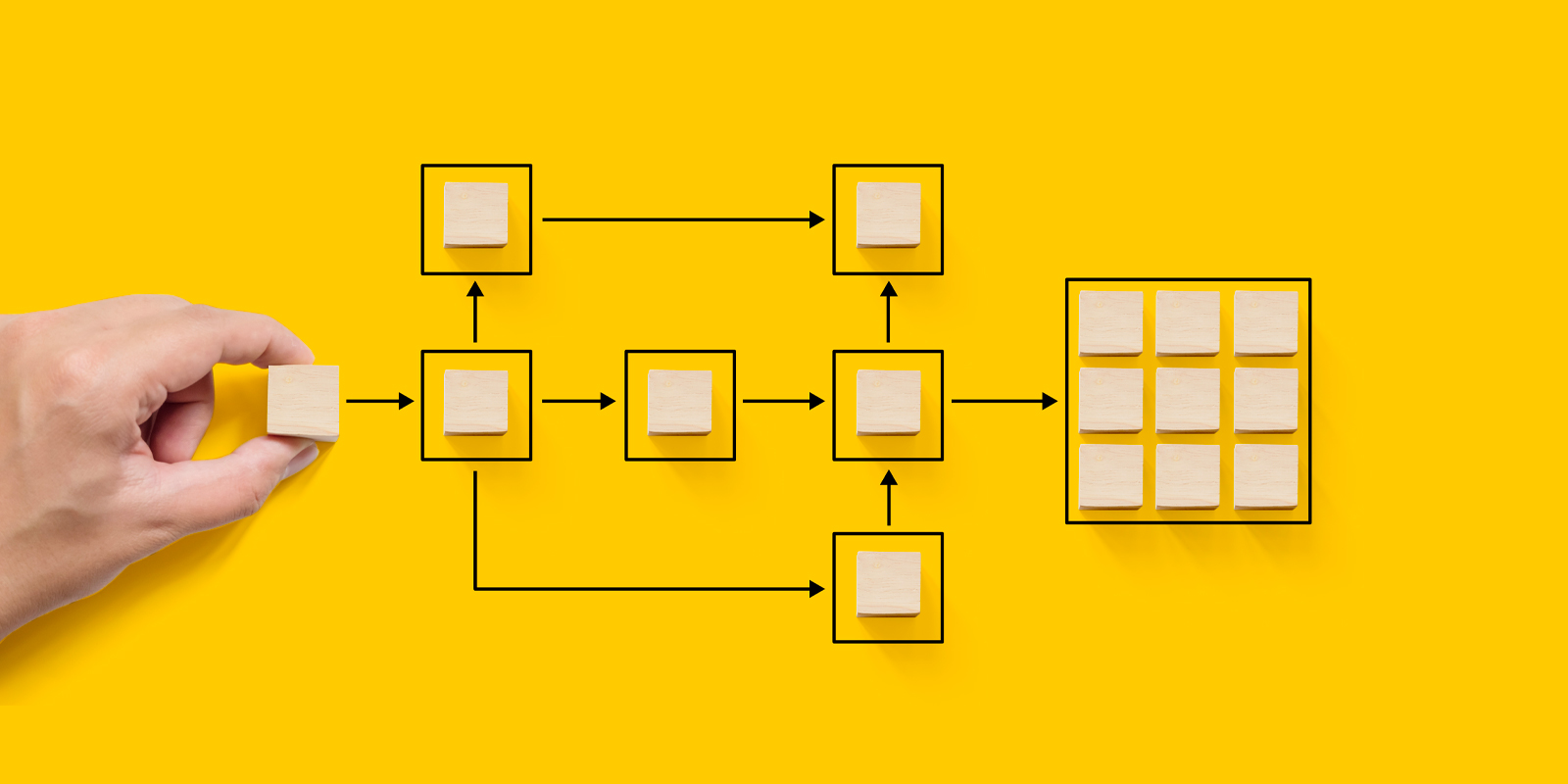Artwork project management often involves a lot of people from different organizations. Creating workflows can be challenging for project managers when multiple projects are running. It’s easier to make sequential workflows, but parallel workflows can also be functional in specific scenarios.
For instance, if a brand changes its headquarters or their manufacturing facility, then they need to change that on the product label too. Here, after the design team executes the changes, the brand can sign off the project in parallel. The legal team, marketing department, quality control, and others will check the different aspects of the label, including Label Management, and provide their feedback.
Artwork Management Workflows
One can broadly classify workflows as sequential and parallel. A combination of such workflows can also exist. The problem at hand will define how you will manage the artwork development project.
1. Parallel Approval Workflows
As the name suggests, parallel workflows happen when multiple people work on different areas of the same artwork project simultaneously. So, while the marketing team is reviewing the principal display panel, legal team reviews the information panel. Meanwhile, another collaborator is reviewing the design elements.
Parallel workflows are great for simple projects where the tasks can be divide into independent sub-tasks. They also allow you to meet deadlines faster and utilize available resources effectively. Also, if one assignment gets delayed, the other tasks are not affected because of that.
2. Sequential Approval Workflows
Sequential workflows have tasks set one after the other. In this case, the artwork design of the principal display panel is first reviewed by the project manager. When the design skeleton gets approved, the artwork moves to the next stage where the legal team reviews the text information on the labels.
Sequential workflows are simpler to set up. For larger projects where one task depends on the completion of a prior task, sequential workflows are the way to go. It also allows team members to review errors at each stage, correct that and move on to the next one.
Parallel vs Sequential Workflows

Pros of Parallel Workflows
- Parallel workflows are ideal when you need a faster turnaround time.
- They are ideal for projects where you can break up into smaller tasks and assign to a different department.
- Workflows are disaffected by delays in other parts of the projects
- Allows optimal resource utilization.
Cons of Parallel Workflows
- Can be difficult to manage without the right tools
- Large complex projects with interdependent tasks cannot be parallelized
- Not ideal for smaller brands with a lesser number of employees.
Pros of Sequential workflows
- Sequential workflows work with almost all types of projects
- They can be managed easily with simple tools. They do not need complex project management software.
- They are ideal for smaller brands that do not have a lot of employees.
- It is easier to deal with errors and bottlenecks as brands deal with one issue at a time.
Cons of Sequential Workflows
- Sequential workflows increase the turnaround time.
- A delay in one stage is reflected throughout the entire duration of the artwork development project.
- Brands may not use resources optimally when they opt for sequential workflows.

Types of Artwork Management Projects
Brands switch between sequential and parallel workflows depending on the project complexity, budget, and timelines. Often brands will also combine these workflows. Small independent subtasks will run in parallel and interdependent tasks will run in a sequence.
Here are some examples:
1. Updating Product Label with New Information
For instance, if a brand changes its headquarters or their manufacturing facility, then they need to change that on the product label too. Here, after the design team executes the changes, the brand can sign off the project in parallel. The legal team, marketing department, quality control, and others will check the different aspects of the label and provide their feedback. For example, the marketing team will look at the design, color use, layout, and more. The quality control team can look at the consistency of text elements, while the legal team can verify the textual content in the label. These tasks can take place parallelly.
2. Designing a New Label
Designing a new artwork is a sequential process. The brand will give the design team a creative brief, the designers will provide a draft, and the company will give feedback on it. Here, one task depends on the completion of the other. While some areas, such as feedback collection, can be parallelized, the approval process, as a whole, is sequential within a Creative workspace Platform.
3. Making Corrections
This task can either be sequential or parallel. If the brand wants to change a logo, then they can parallelize the entire approval process. However, if they need to add some mandatory regulatory text that reduces the space for other information, then it will be a sequential task. The brand can get the regulatory text signed off by the legal team. Then the marketing and quality control team can work on the text layout to ensure all the information fits in the label.
The choice of workflow automation also depends on the industry. For instance, the pharmaceutical industry would prefer a sequential workflow because it is easier to manage. This would mean there are fewer errors in labeling. Labeling errors in pharmaceuticals is taken quite seriously as it may lead to major consequences in the market, including massive product recalls
The food and beverage industry can opt for parallel workflows as they often have rushed deadlines. Parallel workflows can speed up the artwork development process. With the right tools, managing errors can also be simplified.
Ending Thoughts
Choosing between workflow is a trial-and-error method. Look for an artwork management software which allows you to do both so you can see the results and determine the optimal workflow.
Which approval workflow has worked for you? Tell us in the comments below!

.svg)
.svg)











.webp)



